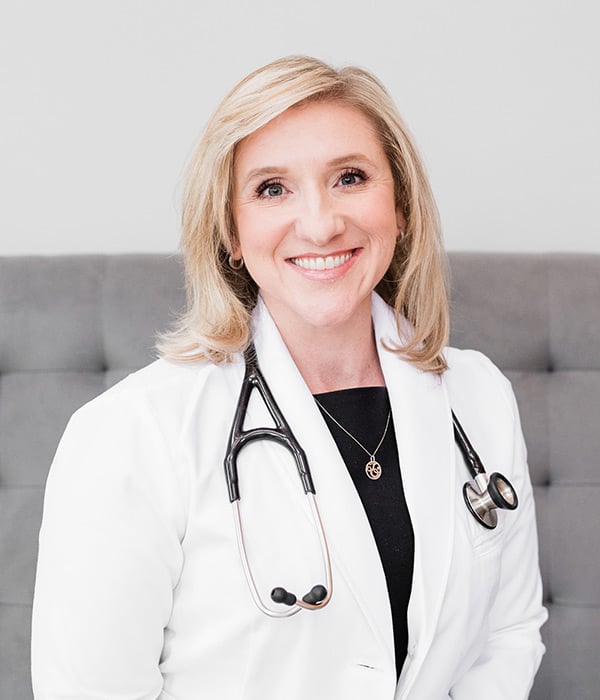Vital signs are one of the most important physical exam components that we are taught during our healthcare training, and in all seriousness, by insurance companies if we want to get reimbursed for our services. But have you ever asked yourself, why we need that weight element? Many healthcare providers follow established guidelines by weighing their patients and calculating a body mass index (BMI), labeling a patient before they even lay eyes on them leading to an implicit bias that will dramatically skew the healthcare provider’s lens for assessing and treating that patient.
Let’s talk about the history of the BMI. Around the 1830’s, a mathematician (not a physician) named Lambert Adolphe Jacques Quetelet introduced the BMI as a formula to give a quick and easy way to measure the degree of obesity of the general population as a way for the government to determine allocating resources. Quetelet’s formula was solely based on the size and measurements of white European male populations – not individuals. Weight was not considered a primary indicator of health until the early 20th century. This was when United States life insurance companies utilized the BMI for the purposes of determining what to charge prospective policy holders. A flawed system only representing those with resources and legal ability to purchase life insurance, sales agents, not healthcare providers, were determining the overall health of an individual based on inaccurate statistics and lack of medical knowledge. And who followed suit? Health care providers started using those statistics as a means to determine their patient’s health, labeling obesity as a co-morbid condition and disease with a direct correlation to the word “fat.” Bear in mind that fat is not a bad word, but rather a descriptor that is not meant to be negative. These “guidelines” have created detrimental consequences for individuals, especially those of color, where many co-morbid conditions are misdiagnosed and mistreated in the this population, leading to mental health concerns, poor self-esteem, and increased risk of medical problems.
Discrimination based on weight has been a common theme in the healthcare world. Higher weight women report feeling stigmatized by their physicians. they avoid healthcare, secondary to the stigma and shame centered around their weight, in an attempt to escape the stress and anxiety around those healthcare encounters. Avoiding medical care leads to a delay in preventive screenings, diagnosis, and treatment for health issues. Healthcare bias research around weight found that healthcare providers view higher weight individuals as lazy, noncompliant, and undisciplined. Several studies have shown that body image (mental health) has a bigger impact on overall physical health than on measuring body size alone. Sizeism in healthcare is one of the leading causes of negative health outcomes along with other forms of oppression, including ageism, sexism, racism, and trans/homophobia.
So what can you do? Here are a few tips on having a more inclusive approach to addressing weight in your healthcare practice:
- Prioritize well-being vs weight loss. Asking your patients how they feel in their body can help increase confidence and achieve appropriate goals set for that individual.
- Stop weighing your patients, unless needed for a surgical intervention or medication dosing.
- Start the conversation with behavior changes and collaborate with patients on maintaining healthy habits, regardless of their wegiht. Here are some questions you can ask your patients:
- Is this a typical weight for you?
- Have there been any significant changes in your weight that you are concerned about?
- Are you comfortable and happy at your current weight?
- If they would like to make a change, ask what change they would like to focus on and ask permission to give some overall suggestions.
- Weight should be consensual – ask your patients if they would like to talk about their weight today, and if you feel the need to weight your patient, always give them the option. Remember if they decline, move on. Mutual respect is a key part of the relationship with your patient.
- Focus on other options besides weight loss as suggestions to improve specific health concerns. Not everyone has access to a gym or gym equipment. Encourage your patient to focus on movement that brings them joy (dance, yoga, hiking, etc).
- Representation is important. And often times body size is left out of that representation. Be sure to have inclusivity within your practice including artwork, website, staff, patient education, office furniture, and your words.
These approaches would greatly reduce body shame and weight stigma, improving their overall healthcare and allowing the patient to be an active participant in their healthcare rather than avoiding medical care altogether. One patient confided in me about an experience she had with a medical provider that told her all of her symptoms would go away if she would lose about 20 lbs. Her response was, “So, if I got out to my car, cut my leg off, therefor losing that 20 lbs, all of my problems will go away?” Consider how many missed opportunities there have been in healthcare simply because we have chosen our focus to be on weight rather than the person sitting in front of us. So, I challenge you to open your mind and reject the social construct of the BMI, recognizing that science has refuted many of those myths marginalizing people based on their weight.
Remember, all bodies are good bodies.
Citations:
- Joan C. Chrisler & Angela Barney (2017) Sizeism is a health hazard, Fat Studies, 6:1, 38-53, DOI: 10.1080/21604851.2016.1213066
- Puhl, R.M. and Heuer, C.A. (2009), The Stigma of Obesity: A Review and Update.Obesity, 17: 941-964. https://doi.org/10.1038/oby.2008.636.
- Mensinger JL, Tylka TL, Calamari M. Mechanisms underlying weight status and healthcare avoidance in women: A study of weight stigma, body-related shame and guilt,and healthcare stress. Body Image. 25 (2018): 139-147.
